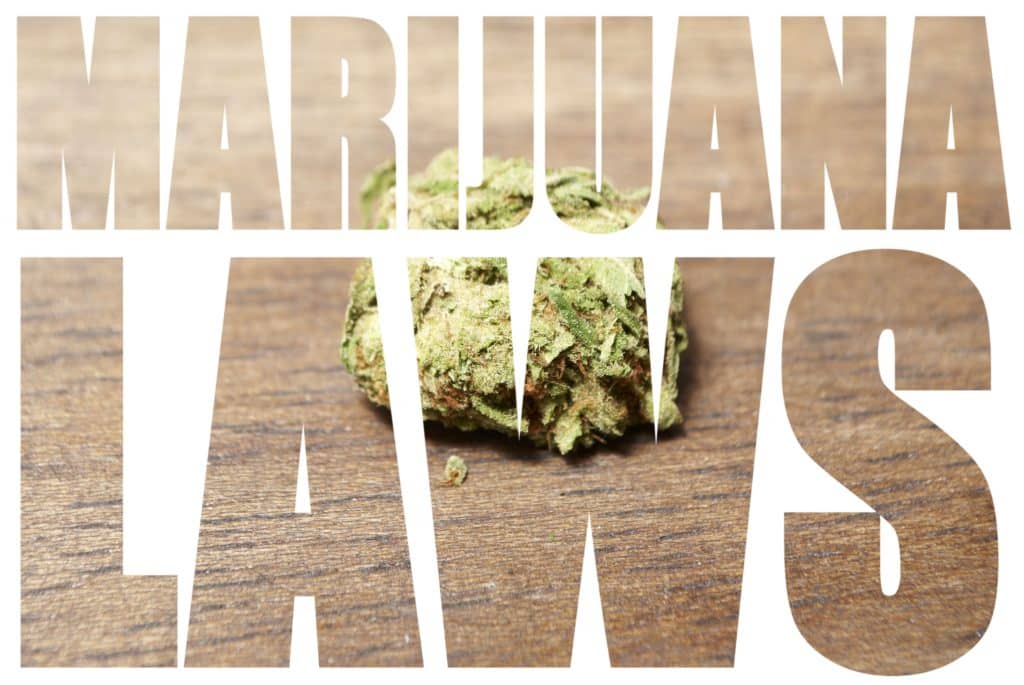We the people don’t always get much direct choice, even in our democracy of a government. So when ballot measures are offered, its one of the few times that voters can decide a topic by themselves, not through their representatives. Five states had marijuana ballot measures for recreational use in this year’s mid-term elections. Two voted yes, while three voted no. Read on to find out which states did what, and what this means to America.
Thanks for making your way over. Keep up with all updates by signing up for the Cannadelics Weekly Newsletter, which comes chock full of deals on cannabis flowers, vapes, edibles, smoking paraphernalia, cannabinoid compounds, and a ton more. Get baked! Do it responsibly!
Going into elections
Going into elections there were 19 states with full cannabis recreational legalizations, with Washington, DC as a 30th location within the US proper. All together that means: Colorado, Washington, Alaska, Oregon, Washington, D.C., California, Maine, Massachusetts, Nevada, Michigan, Vermont, Illinois, Arizona, Montana, New Jersey, New York, Virginia, New Mexico, Connecticut, and Rhode Island.
On top of this, there was another state – South Dakota, which actually did vote in a recreational measure in the 2020 elections, just to have it taken away by Governor Kristi Noem in a gross showing of political overstepping by a lawmaker who simply didn’t like what her people voted for.
Then there’s Minnesota, a state which didn’t implement a recreational policy, but also kind of did. The state legalized the use of THC in edible products, with no limits as to how many products an individual can buy, though each product itself can’t have over 5mg of THC. The THC must be hemp-derived, but this does nothing to change the compound, meaning, regardless of which cannabis plant its from, THC is THC. Though this includes a sales market, it doesn’t include the use of cannabis as flower, vapes, or in any other form, creating a sort of half legalization. It’s not counted as a legal state, but as it now allows the legal sale of THC, again, it kind of is one.

In preparation for the election, six states prepared ballot measures: Oklahoma in the end did not get its ballot measure, apparently due to technical system issues. This relates only to a failure in governance, and is not related to the number of signatures collected: there were more than enough. The measure is now promised for a future year.
In which states did marijuana win in midterm elections?
First, let’s look at the wins. Missouri and Maryland both approved their ballot measures for recreational cannabis. In Missouri, it was all about Missouri Amendment 3 – The Marijuana Legalization Initiative. Missourians overall agreed with this measure that allows the legal possession, use, production, delivery, purchase, and sale of cannabis for adults of 21 or up. The amendment also works to get some cannabis convictions expunged, as well as the ability to petition for release for those in prison, on parole, or on probation for such crimes. It automatically institutes a 6% sales tax on cannabis products.
How’d the vote go? 53.09% voted ‘yes’, which equaled 1,089,017 votes total. In the ‘no’ category, there were 962,230 votes, making up 46.91% of the vote. Missouri already had a medical cannabis program in place, instituted by voter demand in 2018 via Amendment 2. The state also already had a decriminalization policy which allowed for up to 10 grams with just a fine, though it was still considered a criminal misdemeanor charge.
Maryland was the other winner in the recreational marijuana ballot game. Maryland voters had Question 4: Marijuana Legalization Amendment to vote on, which opens an adult-use market in the state beginning in summer 2023. The amendment directly tasks the Maryland State Legislature to come up with and pass legislation to govern the regulation of cannabis, including possession/use, distribution, and taxation of marijuana products in the state. Prior to this, Maryland had a medical program as of 2013, and a decriminalization policy from the following year, which allowed for up to 10 grams.
How’d the vote go? 67.2% of the voting population was in favor of legal cannabis, equaling 1,302,161 votes. In the no category was 32.8%, which amounted to 635,572. This is a much wider divide than in Missouri, which was closer to a 50/50 breakdown.
In which states did marijuana lose in midterm elections?
Wins are fun, but losses must be reported too. Unfortunately, three states with ballot measures did not win enough votes for the measures to go through, though this doesn’t make a lot of sense in at least two states where the ballot measure totals don’t match general voter polling. Why this is, I cannot say. The three states with failed ballots were Arkansas, North Dakota and South Dakota, with South Dakota a particular sore point, as the state already passed a measure, which was taken away two years prior.

So we’ll start there. South Dakota voters had Initiated Measure 27: Marijuana Legalization Initiative put before them in these mid term elections. This initiative would have legalized an adult-use market, as well as possession, distribution, and use of cannabis for adults of at least 21 years of age. How’d it go? Only 47.08% of the population voted yes, with 163,584 votes total. In terms of the winning no vote, 52.92% of the population was happier keeping cannabis illegal, with 183,879 votes cast to not legalize.
This is a little strange, as just mentioned. Most locations work toward legalization, however, this vote shows a backslide from the vote that actually passed the legalization two years ago. At that time, Amendment A, a similar legalization measure, won 54.18% of the vote with 225,260 voting positively for the change, and 45.82% voting negatively (190,447).
This win was subsequently taken away when Governor Kristi Noem conspired with law enforcement to have the win invalidated, which the state did; likely because the Supreme Court was led by a Noem appointee. While I find the whole situation questionable as no other location has done a backslide like this, apparently, this is how it is for now.
North Dakota also failed to pass its ballot measure for legal cannabis. In that state, voters had the Statutory Measure 2: Marijuana Legalization Initiative to vote on which would have legalized the possession and use of up to an ounce of cannabis for those 21 and above. It also would have allowed the personal cultivation of up to three plants, and forced the Department of Health and Human Services to come up with regulation for a regulated market by October of 2023.
How’d the vote go? Only 45.05% of the voting population was cool with this change, equaling 107,279 votes total. The larger no category comprised 54.95% of the vote with 130,849 casting their negative votes. This is the second rejection of such a measure by the state. The first was Measure 3 in 2018, in which 59.45% voted no and 40.55% voted yes. At least the divide is lessening, pointing to a possible positive initiative in the future.
The last state with a failed recreational marijuana ballot measure in the mid term elections, was Arkansas. Arkansas Issue 4 was put before voters and should it have passed, it would have legalized the possession and use of up to an ounce for those 21 and above. It would have instituted a 10% sales tax, with a requirement for the Alcoholic Beverage Control Division to come up with a regulatory framework for a cannabis sales industry. Only 43.72% of the voting population was onboard, with a vote count of 391,041. The majority 56.28%, or 503,313 voters, were not ready to make this change.

Arkansas, much like South Dakota, had an inconsistent poll vote, compared to voter expression of support. While the measure was defeated, strangely, 55% of voters said they actually do support legalization, whereas only 45% don’t support reform. It’s a strange discrepancy.
Where we are now with marijuana after mid term elections
In terms of recreational legalizations, that now makes 21 states, and just about half the population living in legalized locations. This side also includes Washington, DC, though no sales market exists in the district; as well as the US territories The Mariana Islands, which has been legal for recreational use since 2018, and Guam, which has been legal for recreational use since 2019. This is of the five territories (also including Puerto Rico, American Samoa, and the US Virgin Islands) that allow permanent residency, though the US technically has 15 territories.
While South Dakota has flipflopped, it does represent a 22nd state that did vote in a recreational measure, and what with its unusual turnaround, and constant push by the governor to keep cannabis illegal, it must be wondered how legit the vote was this time around; a thought not out-of-line considering how far the governor has previously gone to keep cannabis out. It also represents a state where support didn’t quite match votes, as the percentage of voters saying they do support legalization was actually 57%, with only 43% saying they didn’t. This could indicate possible fraud as this government has already been known to use low-down measures against its people (supposition on my part, but for good reason).
And, of course Minnesota, which represents a state making a legalization policy outside of standard norms for typical legalizations, but which undoubtedly did pass a form of a legalization. That means a 23rd state where something has passed to allow recreational use of marijuana by the public. Even if it doesn’t count as a full legalization, and even if South Dakota isn’t considered a legal state, they both still represent states where measures exist, or were previously passed.
Plus, lets not forget, Oklahoma had really wanted to chance to vote on recreational marijuana in these elections, but had its ballot measure taken away, even though it received enough verified signatures. The idea that technical system errors were blamed is inappropriate at best, and the state is scheduled to have its vote in 2023 or 2024. While I personally see this as highly unfair considering the circumstances, the people of the state, will simply have to wait.
Conclusion
Two out of five states passed their recreational marijuana ballot measures during mid term elections, bringing the official total to 21 legal states, and the unofficial total to 22 legal states when Minnesota is counted. That means just about half the population, or close enough to it, are living in locations with recreational legalizations. All of this indicates that the US government really will have to act fast, as its states quickly turn against it.
Thanks for joining us, guys!! Welcome to Cannadelics.com; where we work hard to bring you the best in independent reporting for both the cannabis and psychedelics industries of today. Hang out with us often to stay informed on everything going on, and subscribe to the Cannadelics Weekly Newsletter, so you’re never late to get the news.









